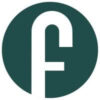Here’s how learning used to happen at Ascension Health, the nation’s largest nonprofit health system: Three to five weeks before a process’ launch, training staff members would jet around the country, visiting every facility.
At each location, they’d get everybody (ranging from three to 500 people) in an assembly room and demonstrate the new process on a stage for a couple of hours. A few weeks later, the process would go live, and employees would struggle to remember what they’d seen once but never practiced at all.
Then, the process would start anew at the next facility.
There had to be a better way and today, there is. Through a blended approach, Ascension Health now coordinates learning across its 67 hospitals in 20 states. The health system’s learning program still uses traditional, instructor-led classrooms where that format makes sense.
Now, though, these classes are mixed in with online courses, in synchronous and asynchronous formats, and backed by an online resource library, as well as sophisticated testing and tracking.
In the last five years, Ascension Health staffers have completed and tracked more than 3.5 million learning activities online, which never would have been possible the way things used to be. Ascension Health’s 130,000 employees and affiliated clinicians have fundamentally changed the way they share best practices, clinical information, implementation strategies and more.
Progress Toward an Ambitious Goal
Ascension Health’s progress with its enterprise learning program has been a boon to the organization. That’s especially true in light of its ambitious strategic direction, which calls for health care that works, is safe and leaves no one behind. As part of that mission, Ascension Health set a challenging goal: have no preventable injuries or deaths by July 2008.
It’s a sweeping effort at clinical transformation that affects all hospitals and related health facilities within Ascension Health. Areas that must be addressed include culture, infrastructure and collaboration.
The organization identified eight priorities for action, including preventable mortality and areas such as adverse drug events, falls and surgical complications. “Alpha” sites in the system are developing the best clinical and implementation practices. They’re also responsible for training the rest of the organization.
Enterprise learning is playing a vital role in Ascension Health’s quest, enabled by a platform that incorporates SumTotal’s learning management system, which Gradepoint Enterprise Learning has configured for Ascension Health. That platform, known as the managed learning environment (MLE), allows collaboration among clinical leaders on design and implementation of best practices courses, launches and tracks learning programs based on these new protocols, and assesses and measures all organizational learning.
Ascension Health has been able to integrate content developed by staff around the country with content purchased from multiple sources, including MC Strategies, HealthStream and The Catholic Health Association. The MLE allows access to learners while maintaining site-specific licensing agreements across 29 ministries.
As Ascension Health continues its journey toward its ambitious goals, success stories that involve learning are emerging throughout the system.
Momentum in Clinical Excellence
Genesys Health System, based in Grand Blanc, Mich., has been a source of exciting new developments in patient care. Using the MLE as their platform, doctors have worked with Gradepoint to translate new procedures into powerful online classes that are being shared throughout the Ascension Health network.
Two of the classes cover advances in the identification and protocols for neonatal infant pain and a review of the best practices for ossiculoplasty.
The neonatal infant pain course used to be instructor-led, and it was limited by resources and its geographic reach. Now, the course has been enabled on the Web, so anyone in the Ascension Health network can access it at their convenience.
“By Web-enabling this content, we’re reaching a much broader audience to discuss the common myths of infant pain, the causes and impacts of pain and the appropriate treatment strategies. This course has actual video and audio of infants for learner diagnosis,” said Jenny Copeland, Genesys Health nurse educator. “The best practices at Genesys Health in Grand Blanc have been leveraged in our sister hospitals as far away as Arizona, Texas and New York. My staff and I can spend more focus on the infants and less time in an instructor-led classroom.”
There’s even an opportunity to demonstrate national leadership on these advances in care. Genesys is exploring marketing the courses across the country as a new source of revenue — staff at facilities outside Ascension Health might be able to take the courses as part of their annual continuing education credit requirements.
The ossiculoplasty course, for example, is being developed by Dr. Wayne K. Robbins, otolaryngology program director. By Web-enabling the course, Robbins and Genesys Health will be able to provide continuing medical education units to physicians across the country.
“Physicians are lifelong learners,” Robbins said. “However, they also live very busy lives. A library of content available to physician learners when they have an interest, a need and the time to devote to education will result in the most efficient dissemination of new concepts and the best patient care available in the world.”
Preventing Patient Injuries
At St. Vincent’s Medical Center in Birmingham, Ala., doctors have led Ascension Health’s effort to eliminate facility-acquired pressure ulcers, another focus of the drive toward zero preventable injuries.
Staff members developed a comprehensive plan to promote the four keys to pressure ulcer prevention: Surfaces, Keep the patients turning, Incontinence management, Nutrition (SKIN). This program is being implemented throughout Ascension Health via the MLE.
Another component of the effort to eliminate pressure ulcers: new beds that are designed to reduce those injuries. To make sure everyone fully understands how to use the beds properly, thus preventing as many ulcers as possible, Ascension Health has rolled out a learning course available on the MLE.
For all these courses and more, Ascension Health continues to use a survey and assessment process to identify new objectives for the clinical excellence process.
Managing Risk in the Workplace
Ascension Health also leverages its blended learning program to reduce costs by managing risks for employees.
Injuries to staff members in the process of moving a patient from one bed to another are the No. 1 cause of employee injury, and they are a major expense at many facilities. So, in conjunction with investing in special bed lifts to make the process easier, Ascension Health introduced a learning course to promote proper, safe techniques for moving patients.
A workplace violence-prevention course also has been widely used at Ascension Health. Originally envisioned as an awareness poster campaign, Ascension Health officials took advantage of their blended learning program to make something much more powerful out of the content. The course has been the most popular in the entire Ascension Health course catalog for the last two years.
Improving the Bottom Line
Risk management isn’t the only way Ascension Health is using its learning program to improve business performance.
For example, the system’s corporate office recently developed and rolled out a worker’s compensation claims learning course for management personnel. Ascension Health officials think managers will be able to get staff members back to work more quickly (in a different role if necessary) by taking a more hands-on approach to compensation claims on a case-by-case basis.
Ascension Health leaders also created an enterprisewide supply chain strategy as part of a drive to use all resources more efficiently. That strategy is being furthered by a Supply Chain Learning Academy the MLE platform supports. These courses are showing workers throughout Ascension Health how to simplify purchasing through single sourcing, standardize a global product catalog and improve decision making through consolidated information, shared best practices and precise performance measures.
The ultimate goal is to generate significant savings and redirect increased time and dollars to patient care.
Future Learning Potential
In the six years since the implementation of the MLE, Ascension Health’s learning program and capabilities clearly have come a long way. But the organization hasn’t stopped evolving.
This year, Ascension Health is migrating to the newest version of the MLE after a successful pilot rollout at Ascension Health’s Providence Hospital in Mobile, Ala. The new version’s enhanced functionality includes linking and tracking to more than 170 third-party courses, management access to assign/view direct reports’ learning activities and role-specific reporting across the enterprise. Other key components include the integration of badge readers for automating course enrollment and completion, as well as internal development of online content.
Today, physicians, nurses and other Ascension Health employees are turning to their enterprise learning program at their convenience to learn and grow as employees, as medical professionals and as individuals. The MLE upgrade will add to that capability.
Regardless of from where the next important advance in patient care comes, Ascension Health employees know they’ll be able to share that valuable knowledge through learning and apply it promptly to the patients they treat every day.
















